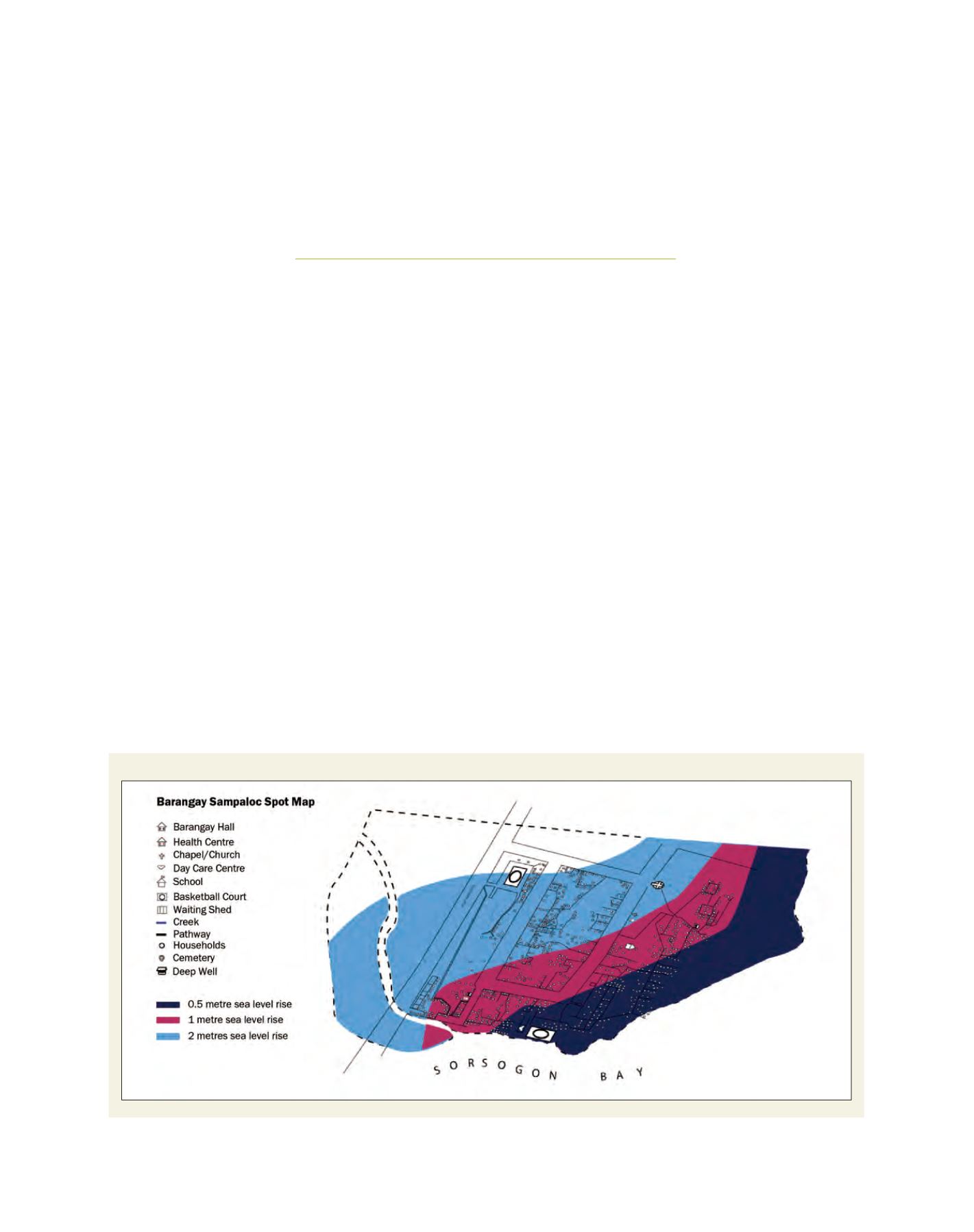

[
] 161
Projecting globally, planning locally:
a progress report from four cities
in developing countries
Robert Kehew, Human Settlements Advisor, UN-HABITAT
O
btaining climate change projections and trying to apply
them at the local level is a challenge that urban planners
and local officials must increasingly confront. Planners
disagree about whether current projections are adequate.
Among the more sanguine are the authors of the World Bank’s
Framework for Urban Climate Risk Assessment, who conclude
that: “relatively straightforward downscaling of global climate
model simulations provides ample information for assessing
urban-scale vulnerability and risks, at least in initial stages”.
1
Of the contrary opinion are urbanists such as David Dowall of
the University of California, Berkeley, who states flatly that the
‘biggest problem’ with current climate projections is that they:
“are too gross-grained for planning purposes”.
2
Still others have
been frustrated not so much with the scale of projections but
that some models disagree as to the basic direction of climate
change impacts for a given locale.
Research is presented here from the practical field perspective of
urban management practitioners who are users or consumers of clima-
tological information at the local level, rather than climatologists. It
is based on the initial efforts of the Cities and Climate
Change Initiative (CCCI) of the United Nations Human
Settlements Programme (UN-HABITAT), to assist four
pilot cities to help vulnerable populations adapt to the
impacts of climate change and/or reduce greenhouse gas
(GHG) emissions.
3
Information needs and available plan-
ning tools vary, depending on the type of climate change
phenomenon under discussion. This report is intended to
afford scientists insight into priorities for refining relevant
projections and their application by urban users.
Cities and Climate Change Initiative pilot cities
Currently the CCCI is working in four cities in differ-
ent regions of the developing world. Two of these are
intermediate in size (one to five million inhabitants),
while the other two are small (100 to 500 thousand
inhabitants). In devising approaches to address climate
change, these cities represent an important target popu-
lation: the world is mostly urban, and more than 75 per
cent of the urban population lives in cities in those size
O
bserving
, P
redicting
and
P
rOjecting
c
limate
c
OnditiOns
Sorsogon City: SLR simulation relative to area elevation projected against Barangay Sampaloc base map
Source: UN-HABITAT, Climate change assessment for Sorsogon City, the Philippines, 2009
















